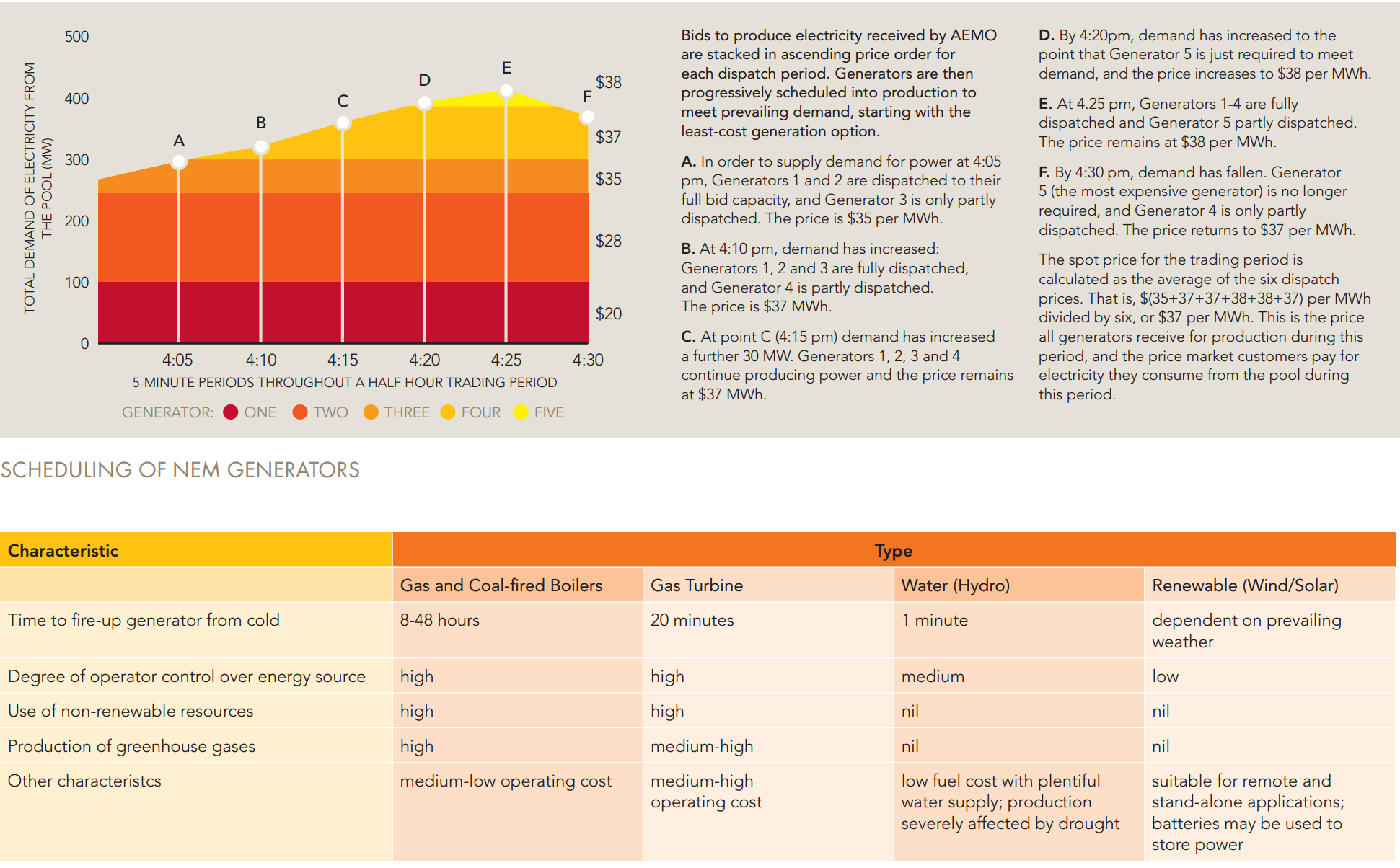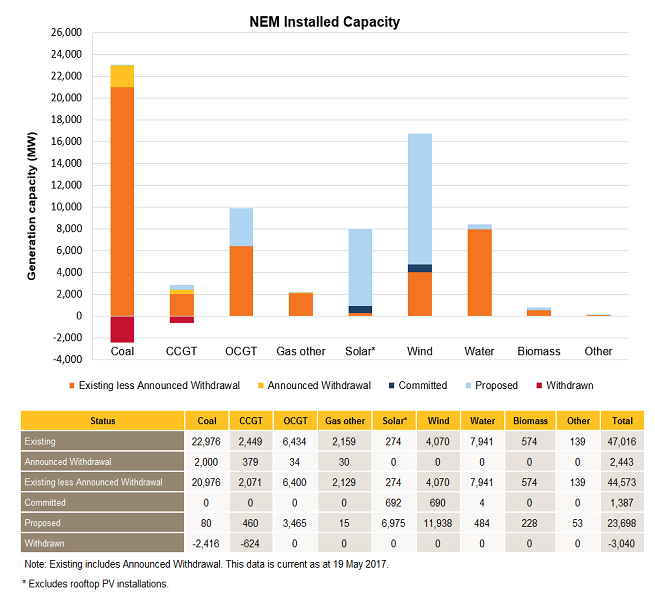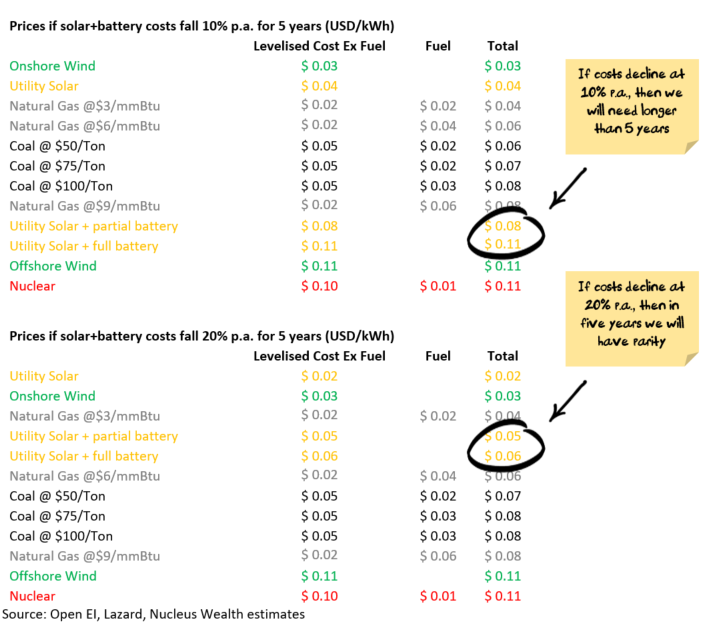From Adam Creighton today:
Taxpayers will have paid more than $60 billion through federal renewable energy subsidies by 2030, about twice what the crumbling car industry received over 15 years and enough to build about 10 large nuclear reactors.
The government’s large and small-scale renewable energy targets, which will compel energy retailers to buy 33 terawatt hours of wind, solar and hydro energy by 2030, will deliver about $45bn of subsidies to renewable energy producers over 20 years, according to analysis by The Australian.
The grab bag of direct subsidies from the Australian Renewable Energy Agency and the Clean Energy Finance Corporation — which have spent or lent concessionally, respectively, $870 million in grants since 2010, and $4.3bn since 2013 — are on top of that.
Meanwhile, the proposed clean energy target arising from the government’s Finkel review, would mandate a further 33TWh of energy from renewable sources, costing an extra $11.3bn over the 10 years to 2030.
Government MPs yesterday sounded the alarm over the subsidies and called for clarity over government plans for a new coal-fired power station.
The chairman of the Coalition backbench committee for energy, Craig Kelly, described the costs of the subsidies as an “appalling waste” resulting from an “ideological rush to renewables”.
“No one will ever be able to compute the full opportunity cost of the alternate productive assets that this capital could have been invested in,” Mr Kelly said.
“We already have some of the highest electricity prices in the world. And what industry will we still have if we go down this track?”
Victorian Nationals MP Andrew Broad, chairman of the standing committee on the environment and energy, said the RET should be scrapped to allow renewables to compete on merit.
“To spend all that money and still have expensive power prices means the settings are all wrong,” Mr Broad said.
OK, let’s start at the top. Why do we have a RET? To fight climate change. Yes, that’s going to cost. If you don’t believe it’s needed then there is no cost.
Also, we have the RET largely because we don’t have a carbon price. Who killed the carbon price? Mssrs Kelly and Broad, as well as Adam Creighton’s paper.
Is the RET efficient? No. It is not technology agnostic and therefore distorting. Having said that, were there no RET the generation mix would not look hugely different. Even within the RET, wind and solar development has transpired using the most efficient available assets in the best locations. For instance, that’s why SA has so much wind power, it’s…err…windy.
Has the RET lifted energy costs? No, mostly it has lowered them by boosting generation supply. More recently it’s being blamed for price rises because closing coal-fired power is leaving the system short of baseload. But that’s not right, either. We had a plan to allow gas to supplant coal as the “transitional fuel” for baseload and it was going swimmingly until we allowed an eastern gas cartel to form and it sold all of the reserves to Asia, driving the price higher by 800%.
Renewables sit at the bottom of the wholesale electricity bid stack. Gas sits at the top. Thus gas sets the marginal price of electricity in the National Electricity Market. See Australian Energy Market Operator description below:

So, how to fix it? You can:
- re-install a carbon price to trigger an huge boom in energy storage as your new baseload mechanism;
- allow the RET to continue, press your head firmly between your legs, and hope that renewable storage can compete (in roughly five years) before more coal closures that hand the gas cartel more power;
- allow the runaway gas price to drive demand destruction (freezing and killing off pensioners plus closing factories) and eventually the gas price might fall. Sadly, though, we may not have enough pensioners to kill and the gas cartel will simply shift those extra volumes offshore as well, probably keeping the local price high;
- break the gas cartel using some combination of domestic reservation, price controls and nationlisation;
- build a fleet of coal-fired power stations to displace the gas generation in about ten years. You’ll need roughly ten of them to replace the 15MW of lost gas generation. That’ll trash your Paris commitment and they’ll be horrible loss-makers as carbon is priced more and more globally but, hey, you’ll have your baseload:

You will note from the above options that the only action that can do anything to lower prices inside about a decade is breaking the gas cartel.
It’s all politics you see. The economics are simple.
To wit:
Australia should develop a nuclear power industry to reduce its emissions, the Minerals Council says, and the Turnbull government should take the first step by removing legal road blocks.
In a new paper titled Removing the Prohibition on Nuclear Power, the lobby group argues just four words – “a nuclear power plant” – need to be cut from the Environmental Protection and Biodiversity Act to begin clearing the legal path to the development of a nuclear industry.
The latest idea to curb greenhouse gases is a clean energy target, but what does that actually mean?
It argues that any nuclear power plant would still be subject to Australia’s strict environmental laws and that nuclear power offers zero emissions, base-load energy that can run day and night, and that it is operating in 30 countries around the world.
Most contentiously, it argues the technology is safe, citing a British study by Friends of the Earth – a claim opponents would dispute by highlighting the Fukushima, Chernobyl and Three Mile Island disasters – and affordable, which opponents would also dispute.
The call to re-think the prohibition on nuclear power comes as the Turnbull government grapples with how, or whether, to implement a post-2020 clean energy target, as recommended by Chief Scientist Alan Finkel’s review of the electricity sector.
You can add it all you like but without specific and directly targeted public subsidy it won’t be built. Nuclear is too expensive. On our modelling, the renewable/storage killer app is cheaper than the cheapest coal within five years:

Nuclear is a jewel-encrusted white elephant by comparison.

